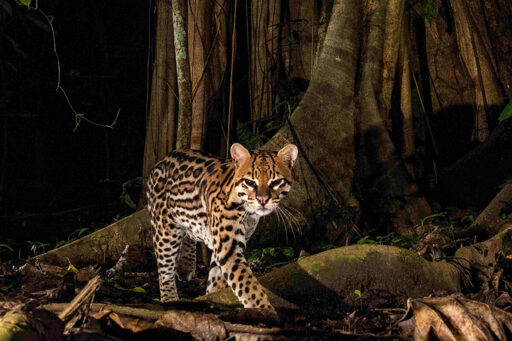Founder’s Briefs: An occasional series where Mongabay founder Rhett Ayers Butler shares analysis, perspectives and story summaries. In the Peruvian Amazon, a series of curious encounters has left biologists scratching their heads. Camera traps have captured an unexpected partnership: solitary, nocturnal ocelots (Leopardus pardalis) strolling alongside common opossums (Didelphis marsupialis). Not once, but four times, in distinct locations over several years, the feline predator and its potential prey were seen moving together—sometimes even returning along the same path minutes later, still in tandem. The opossum, far from appearing alarmed, showed no signs of distress. An ocelot (Leopardus pardalis) and a common opossum (Didelphis marsupialis) in the Peruvian Amazonian rainforest (Cocha Cashu Biological Station), recorded through camera trapping. Photo credit: Fortunato Rayan. This behavior is not only puzzling; it is without precedent. Associations between solitary carnivores and omnivores—especially those that occasionally dine on one another—are vanishingly rare. Yet further evidence suggests this pairing is more than happenstance. In field experiments, opossums showed a distinct preference for the scent of ocelots over that of pumas or neutral controls. They lingered, sniffed, and rubbed themselves against the ocelot-scented fabrics, as though seeking some form of chemical communion. Why cozy up to a cat that might eat you? The researchers, writing in the journal Ecosphere, suggest two possibilities: improved foraging efficiency or olfactory camouflage. Opossums may benefit from the ocelot’s hunting prowess, while the ocelot may gain from masking its scent with the opossum’s pungency. There is precedent in the animal kingdom: coyotes and…This article was originally published on Mongabay
From Conservation news via this RSS feed


